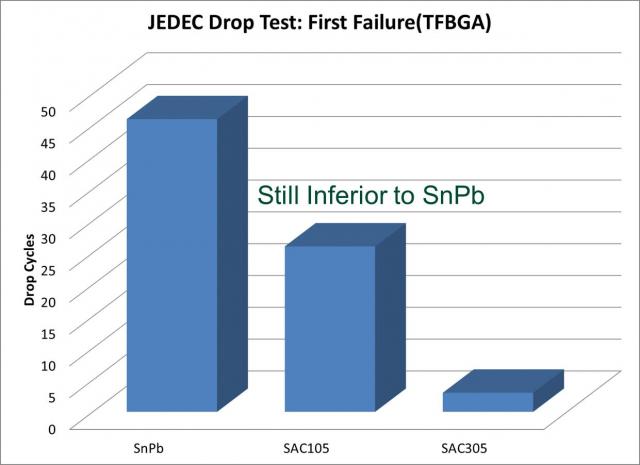As I discussed in my last post, the industry has found that reducing the silver content of SAC alloys helps to improve its mechanical shock performance. However, low-Ag alloys such as SAC105 are still inferior to its Sn/Pb predecessors in some important ways. The graph below shows this trend.
Indium Corporation spent several years developing an alloy that bridges the gap between SAC solders and Sn/Pb solders for mechanical shock resistance. The culmination of this research has led to the development of SACm®. SACm® not only outperforms SAC105 but is superior to Sn/Pb when it comes to mechanical shock. For complete test data on SACm® visit www.indium.com/SACm.
*This post is part of the Introducing SAM® series.




